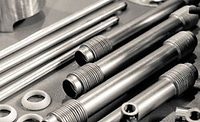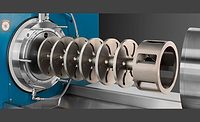Seven Ways a Data Logger Can Save You Money

Every day we talk with dozens of customers to help them find the right data logger for their project. One of the first questions we ask is, “Why are you buying a data logger?” Our goal is to understand the problem they are trying to solve or the reason they are looking for a logger. Like many things, it often boils down to money: trying to reduce the cost of lost product or production, or finding ways to improve quality and efficiency, and reduce expenses.
What Does A Data Logger Do?
Data Loggers are devices that record information by periodically taking measurements from external or internal sensors over an extended period of time. Data loggers are an ideal way to capture data by removing the need for personnel to spend time manually taking and recording measurements. In addition, many data loggers can provide alarm capabilities to notify staff a measurement falls outside of the acceptable range.
Data loggers can record temperature, humidity, current/voltage, and many other types of data. They come in a wide range of styles and capabilities. There are small, inexpensive, single-channel models that can simply record just a few thousand points of one specific parameter. Other models can capture millions of points from multiple sensors, process the data as it’s collected, evaluate complex alarm logic, and automatically push the data to a server for further analysis and backup.
Based on the responses from customers in many kinds of industries with all different types of applications, we have compiled a list of seven common ways that using a data logger can help save money.
How Can Data Loggers Save You Money?
- ‘Stand-alone’ operation (records on its own) – no need to have staff manually read and write down values, saving labor costs and freeing up staff to do other tasks.
- Reduce errors – since the data is measured and stored electronically, accuracy is improved and costly errors or data loss are eliminated. This can reduce rework and scrap costs, and eliminate the need to retest.
- Simplify analysis – having the data in electronic format allows it to be immediately used in Excel or other programs without time-consuming manual entry. Improved analysis can help identify opportunities to reduce material and processing costs.
- Capture data on machine and worker productivity by shift, week or month to identify opportunities to increase output/reduce cost.
- Improve product quality and reduce scrap by capturing process data such as oven temperature profiles.
- Monitor energy usage to find targets for conservation or retrofit to reduce energy costs. Equipment like motors, pumps, air compressors, HVAC and lighting are prime candidates for potential cost savings.
- Immediate alert notifications with alarm outputs can help prevent potential problems before product loss occurs.
Examples
Following are some examples as to how different data loggers are used in specific applications to get you thinking about how you might be able to employ data loggers in your operations to save money and improve the bottom line.
Remote Alarms Save Your Products
By continually monitoring temperature using a logger that provides e-mail and voice message alarms, you can be notified the instant that your environment goes outside safe temperatures. This is popular not only in medical and life science applications but also in food, beverage, and industrial monitoring applications. This feature alone can pay for the logger by helping to avoid a disastrous loss of product or a costly process delay.

Wireless Communication for Instant Access to Data
Wireless data logging systems with remote monitoring capability allow access to temperature data anytime, anywhere.
This WiFi/Bluetooth Temperature Data Logger is a two-channel model with a measuring range of -40 °F to 230 °F
that can automatically send data to TandD’s free WebStorage Service. Users can access stored data and receive alarms
on their mobile devices directly from the cloud. Imagine the time you can save being able to check temperatures remotely without having to walk across the plant or drive to the office.

Prove Product Quality to Inspectors and Vendors
Some data loggers continually monitor product temperature whether in storage or transit, electronically storing the data for quality compliance purposes. These simple temperature-monitoring solutions are easy to use, log automatically and are designed to operate in any industrial environment. Built-in LEDs indicate if the product has been outside the acceptable temperature range, allowing immediate acceptance or rejection of a shipment at the receiving location before it makes it into inventory. If you need a report, their built-in USB interface makes a connection to a PC for downloading the data a snap.

Proof of Regulatory Compliance
If you need compliance for FSMA, HACCP, FDA or another industry regulation, data loggers easily capture and store critical measurements in an unalterable form as the basis for a documentation system proving regulatory compliance. As many of our customers have found, electronic record-keeping can dramatically reduce the cost compliance reporting and virtually eliminate errors and missing data.

For more information, visit www.DataLoggerInc.com or call at 800-956-4437.
Looking for a reprint of this article?
From high-res PDFs to custom plaques, order your copy today!








